Let me share my personal experience with a home solar system.
We have a three-storey house (1 kanal), when the menace of loadshedding began the initial setup was one UPS from ground+basement and one for first floor (both 1.4kW Inverex 24V ModSine, with 2x145am lead-acid batteries). Then in Sept '12 we upgraded to a single UPS and added solar to the setup (640W Shanghai Solar Poly, epSolar 24V 30am MPPT, Inverex 2.4kW 48W Pure-Sine, 4 x 175am lead-acid batteries). In June '13, I doubled the panels to 1280W - each array goes into a 30am MPPT charge-controller, which in turn charges 2 batteries. [The panels came from an acquaintance who has setup 400 villages under AEDB project in interior Sindh/Punjab and sourced them from factory (IEC 6215 certified), and the panels are performing well in these conditions for 5+ years.]
The choice for lead-acid was for (a) achieving low-investment setup to see how the rest of the system performs (b) I have seen lead-acid (Volta) batteries in use at PCRET (Pakistan Council for Renewable Energy Technologies) and they perform well if battery capacity is properly measured to avoid deep-cycling. Of course they are not maintenance-free (need to check water level once a month), but it beats changing oil and filters for generators.
This is what the panels look like:
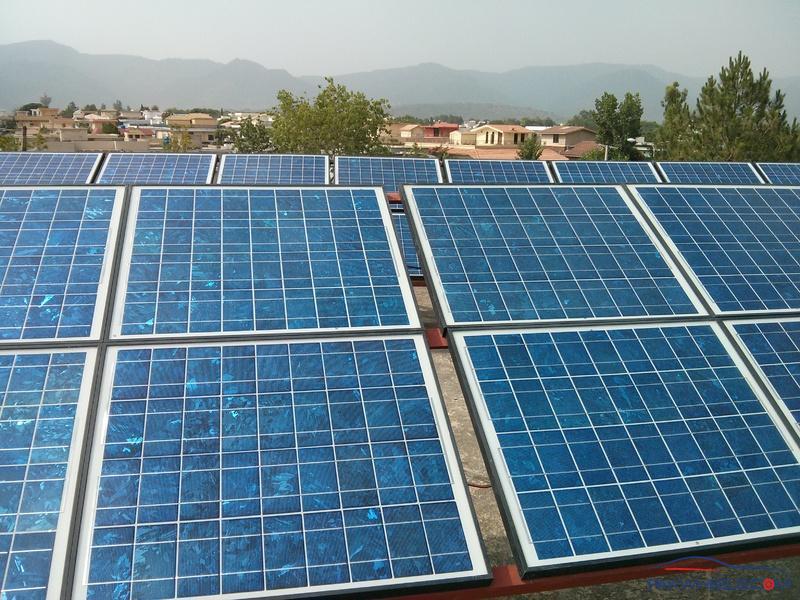
How the array of panels have been setup at the highest elevation:
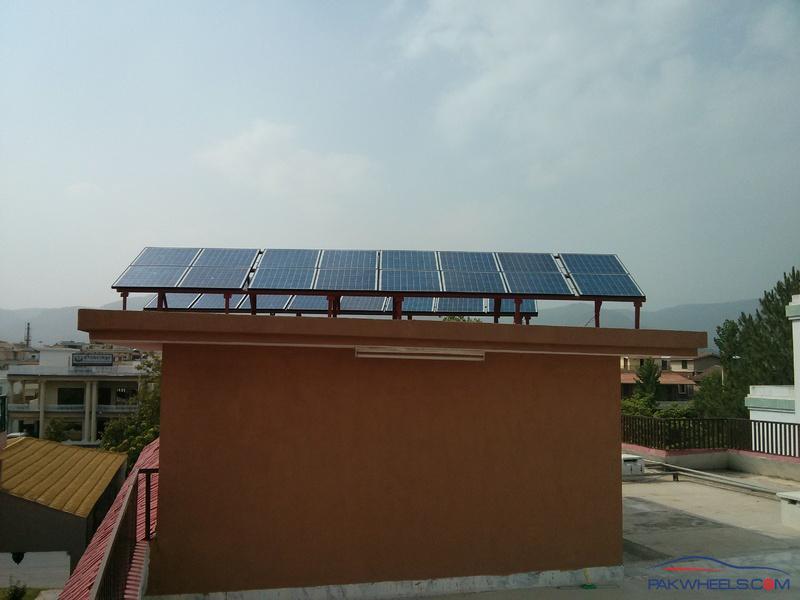
So the question on most people's mind... how does it impact your WAPDA usage. Before we look at that, let me again share some details: we have had two meters from WAPDA since the house was made, the majority of residents (6) spend time in ground floor and basement, the house wiring has been load-shared to put all ACs and top floor on one meter, and we have a total of five fridges+deep-freezers. Majority of lights are energy-savers: remember, rule #1 before going renewable is to minimize energy consumption.
So here are the stats. To avoid errors due to (a) not receiving bill (b) incorrect meter reading, I track the 6-month rolling average of units consumed and bill paid.
This chart shows the pattern of units for the last three years. The red line indicates addition of solar system.
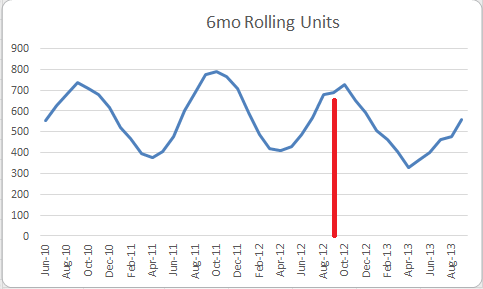
This chart shows the pattern of bill paid for the last three years. Again, red line indicates addition of solar system.
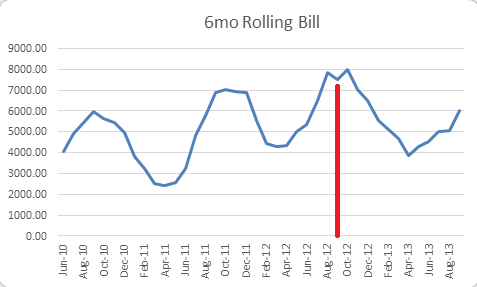
Many people will look at the above chart and say 'Hey, stoopid! It made little or no difference to your bill.' To put that into perspective, look at the unit price over the last three years (almost doubled) and congratulate yourself on the wonders of democracy X(
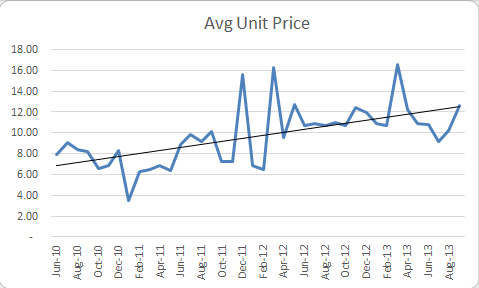
Again, a note on how my system works: using a regular UPS as inverter, Volta 175am truck batteries for backup, and solar panels connected via decent, MPPT charge controllers (before someone flames epSolar/Shanghai Solar: Canadian Solar panels are made in China, please understand you can get crap and gold from China; anyone selling you a MPPT charge controller for 10k or panels at Rs.80/watt is selling you crap). I have a timer setup between the WAPDA line going into my UPS: I select the hours of the day the UPS gets off the grid and runs off solar+battery (summers: 5am - 7pm, winters: 6am-4pm). The UPS powers all the lights/fan/TVs/1 fridge/2 laptops/routers/Xeon workstation with 2 monitors.
Total cost? 400k for everything.
Could I do it cheaper? Maybe.
Does it work? Alhamdulillah, So far, so good.
Will I save money? I forecast a 15-year payback with present numbers. Its likely to shrink to 8-10 years the way Tindoo Bros are jacking up energy prices.
Is it worth it? Absolutely. It adds life to your batteries, is low-maintenance, and keeps the house lighted up.
Any complaints? Not really. System is too small to run washing machine/microwave, if someone gifted me 300k I would want to go bigger.
Comments to people not liking rizwan400's TF panels: TF are great for low-light and high-temperature conditions, so should outperform Mono and Poly panels in the early and later hours of the day. However, they are more expensive, heavier and yield lower power/covered-area compared to the other panels, so one has to take this into consideration. That said, Sharp is a tier-1 manufacturer of PV panels and I'm sure they're performing as per rizwan400's expectations.
Tips for people looking to go solar: The frame for my panels allow adjustment in the tilt of the panels. You can change this during summer and winter months to get 5-10% more output since the sun's path changes during the year. Also, make sure you have easy access to panels to wipe them every 4-6 weeks, our birds do their funny business everywhere just like our people...